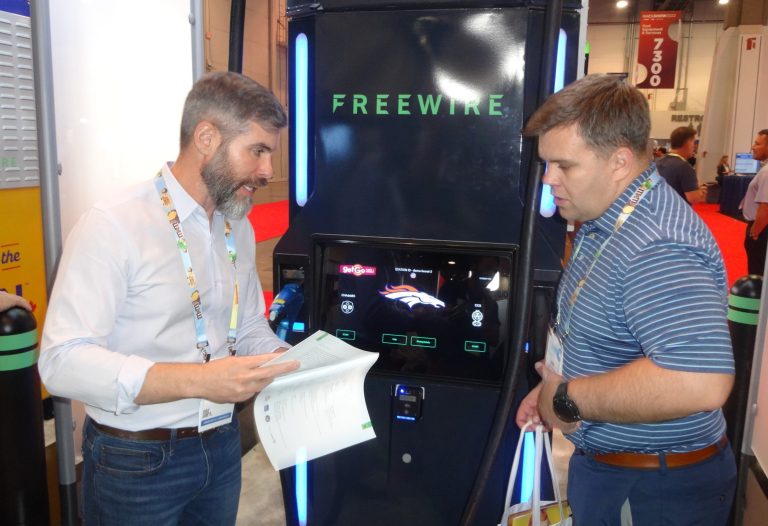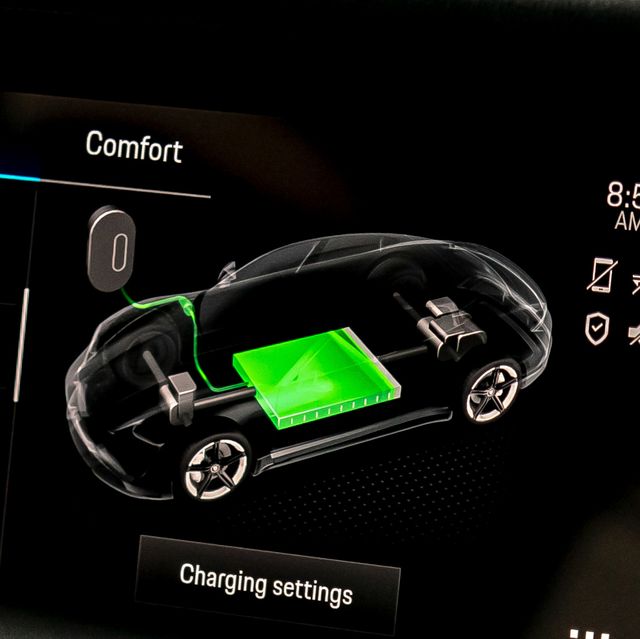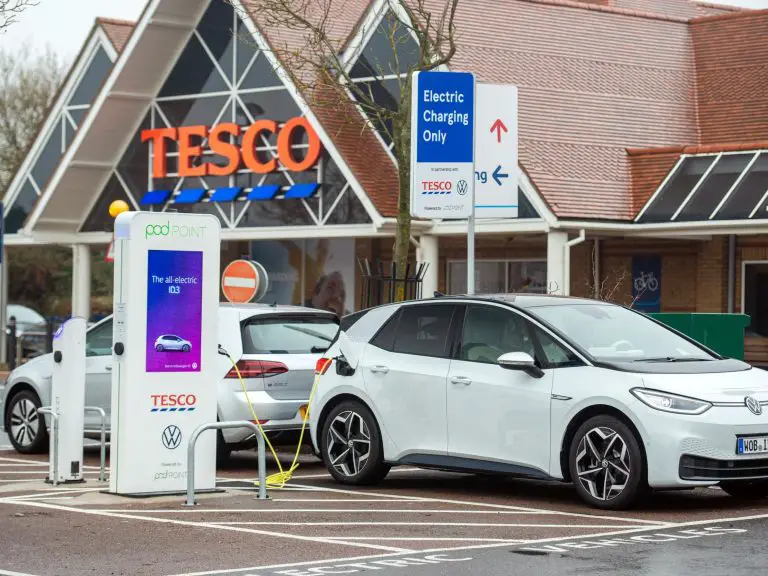Power Up Your Commute: Revolutionizing Electric Cars Charging Infrastructure
Are you considering buying an electric car? Or maybe you already have one and you’re looking for a place to charge it. One of the critical factors that should be taken into account when it comes to electric cars is charging infrastructure. The ability to conveniently charge your vehicle will impact your overall driving experience and ensure you get the most out of your investment.
Electric cars are growing in popularity and becoming more common on our roads. However, they require a different kind of fueling system than traditional gas-powered vehicles. Rather than filling up at the gas pump, electric vehicles rely on a charging station to refuel.
This means that electric car owners need places to charge their vehicles when they’re away from home, whether they’re going on a road trip or just running errands around town. Without proper charging infrastructure, electric cars won’t be able to reach their full potential and will continue to face range anxiety issues. In essence, charging infrastructure is the backbone of the electric car industry, and its importance cannot be overstated.
The lack of charging stations can cause some drivers to worry about running out of power on long drives, which can deter them from making the switch to electric cars. To address this issue, governments, automakers, and other stakeholders are investing in charging infrastructure to make electric cars a convenient option for more people. The idea is to create a network of charging stations that are easily accessible and spread throughout the country.
With the growing popularity of electric cars, the demand for charging infrastructure will surely rise, and we must prepare for this increase in demand. The importance of electric cars charging infrastructure is undeniable and should not be ignored. With proper infrastructure in place, the electric car industry can continue to flourish, and more people can take advantage of this eco-friendly and cost-effective alternative to gas-powered cars.
Current State of Charging Infrastructure
The demand for electric cars has been increasing steadily in recent years, resulting in the need for more charging infrastructure. Although the current state of charging infrastructure varies by region, overall, it is improving. In many urban areas, there are sufficient public charging stations, making it easier for electric car owners to charge their vehicles.
Additionally, automakers such as Tesla, Ford, and Volkswagen are investing in building their charging networks, which reduces the dependence on third-party providers. However, charging infrastructure still faces some challenges, such as the lack of charging stations in rural areas, long charging times, and the need for standardization of charging technologies. Despite these challenges, the advancements in charging infrastructure are making electric cars more practical and affordable for consumers.
As the demand for electric cars continues to grow, it is likely that charging infrastructure will improve further, making electric cars a viable option for more people.
Number of charging stations per country
When it comes to electric vehicles, a major concern for consumers is the availability of charging stations. The number of charging stations varies greatly per country. For example, in the United States, there are currently over 40,000 charging stations, with more being added each year.
In China, on the other hand, there are over 808,000 charging stations, making it the country with the most extensive network. Other countries, such as Germany and Japan, also have relatively robust charging infrastructure. However, there are still many countries that have a limited number of charging stations, making it challenging for EV drivers to travel long distances.
As the demand for electric vehicles continues to rise, it is crucial that countries invest in building more charging infrastructure to support their growth. Without an adequate number of charging stations, EV drivers may be deterred from making the switch to electric, which would be a significant setback in the fight against climate change.

Availability of EV charging stations in cities vs. rural areas
The availability of EV charging stations is a critical factor in the adoption of electric vehicles. While cities tend to have more charging stations due to higher demand and government initiatives, rural areas have been lagging behind. However, the current state of charging infrastructure is rapidly changing with various private companies and local governments installing charging stations even in remote towns.
This development is a testament to the growing popularity of EVs and the need for wider access to charging technology. Additionally, innovative solutions, such as mobile charging units and solar-powered stations, are becoming more prevalent, creating new opportunities for widespread charging infrastructure. With these changes, it is only a matter of time before the accessibility of EV charging stations becomes ubiquitous.
Types of charging stations available
The current state of charging infrastructure has seen a significant increase in recent years, owing to the rising demand for electric vehicles. There are several types of charging stations available, ranging from Level 1 to Level 3 charging stations. Level 1 charging stations require a standard 120-volt electrical outlet and are ideal for use at home.
Level 2 charging stations offer higher power output and can charge an electric vehicle in a shorter amount of time. These stations are commonly found at workplaces, public car parks, and shopping centers. Level 3 charging stations (also known as DC fast-charging stations) can charge most electric vehicles up to 80% in just 30 minutes.
These charging stations are typically found along major highways and can be used for long-distance travel. It’s worth noting that not all electric vehicles are compatible with all types of charging stations. Therefore, it’s essential to consider the charging needs of your electric vehicle before purchasing one.
Overall, the increasing availability, accessibility, and efficiency of charging infrastructure play a crucial role in the adoption of electric vehicles.
Impact of Infrastructure on EV Adoption
Electric cars charging infrastructure plays a crucial role in the adoption of EVs. Without proper charging infrastructure, EVs would not be able to compete with traditional gas-powered cars. Having enough charging stations in convenient locations can alleviate “range anxiety,” and will encourage more people to switch to EVs.
The government recognizes this, and as a result, many countries, including the US, have implemented policies and incentives to boost the deployment of charging infrastructure. However, the infrastructure is still limited in many areas, which is one of the main challenges facing EV adoption today. Although electric vehicles have come a long way, charging infrastructure still has a long way to go.
Governments and the private sector need to work together to bring more charging stations in more locations, increasing the range of EVs, which in turn will make them more appealing to the general population.
How charging infrastructure affects consumer purchasing decisions
The availability of charging infrastructure is one of the most significant factors that affect consumer purchasing decisions when it comes to adopting EVs. The lack of charging infrastructure has been a primary concern for people considering purchasing an electric vehicle because it limits the freedom to travel long distances. On the other hand, having a robust network of charging stations across the country can make electric vehicles more appealing to consumers and encourage wider adoption.
As charging infrastructure continues to expand, it is becoming more accessible, user-friendly, and affordable. Therefore, it makes sense that people are becoming more open to the idea of switching to an electric vehicle. The presence of easy-to-use charging stations is regarded as crucial for a successful transition to an EV-dominated future to be realized.
That is why governments, businesses and stakeholders are investing heavily in charging infrastructure to establish a reliable network that will encourage more people to own electric cars, ultimately reducing carbon emissions and improving air quality.
How governments are incentivizing infrastructure development
Governments across the globe are realizing the importance of infrastructure development in driving the adoption of electric vehicles (EVs). EVs are an important component in reducing carbon emissions and promoting sustainability. Therefore, governments are incentivizing the development of infrastructure such as charging stations to encourage the wider adoption of EVs.
The impact of infrastructure development on EV adoption is undeniable. Where there is adequate infrastructure, drivers are more willing to switch to EVs because they can charge their vehicles conveniently. The increased availability of charging stations will also reduce range anxiety among EV owners.
Governments are offering attractive incentives to companies and individuals who invest in charging infrastructure. The idea is to create a self-sustaining EV ecosystem where infrastructure investment drives EV adoption and vice versa. In the end, the ultimate objective is to reduce emissions and create a sustainable environment.
Therefore, governments are investing in infrastructure development to promote EV adoption and drive an eco-friendly future.
Future of Charging Infrastructure
As electric cars continue to gain popularity, the importance of a well-established charging infrastructure becomes undeniable. With more and more people opting for these eco-friendly vehicles, the need for accessible and reliable charging stations has never been greater. Fortunately, governments and private companies have recognized this need and are investing in building more charging stations across cities and highways.
In fact, major automakers have also pledged to work towards increasing the number of charging stations to make it easier for electric car drivers to travel long distances. With the advancements in technology, we can expect to see faster charging times and improved battery life, making electric cars a more convenient and practical option for everyday use. As the demand for electric vehicles continues to rise, it’s clear that the future of transportation lies in the hands of electric cars and a robust charging infrastructure.
The role of renewable energy in EV charging
Renewable energy is playing an increasingly crucial role in the future of EV charging infrastructure. As more and more electric vehicles hit the road, it’s become clear that relying on fossil fuels to power them simply isn’t sustainable. Renewable energy sources like solar, wind, and hydroelectric power provide a clean and reliable alternative, and many companies are starting to invest in their use for EV chargers.
In fact, a growing number of charging stations are already being powered entirely by renewable energy. This not only helps reduce the environmental impact of driving electric vehicles, but it also helps ensure that the charging infrastructure can continue to grow and meet the demands of an expanding market. As more renewable energy sources become available and more efficient, the future of electric vehicle charging looks bright.
Advancements in fast charging technology
With the rise of electric vehicles, the demand for efficient and fast charging solutions has become a priority for auto manufacturers and charging infrastructure providers. Fortunately, advancements in fast charging technology have made it possible to significantly decrease charging times and create a more consistent charging experience. In the future, charging infrastructure will become more widespread, with charging stations being available in more locations such as shopping centers, workplaces, and public parking lots.
Battery technology will also continue to improve, enabling faster charging without compromising battery life. The adoption of fast charging solutions will accelerate the growth of the electric vehicle market, making it a more convenient and practical option for consumers. This development will not only benefit individual drivers but also contribute to creating a more sustainable and eco-friendly transportation system.
Conclusion
In the quest for a sustainable future, electric cars have emerged as a promising solution. However, the success of electric cars depends heavily on the availability and accessibility of charging infrastructure. As the demand for electric cars grows, it is imperative that governments, businesses and individuals work together to invest in the development of a robust network of charging stations.
After all, without a reliable charging infrastructure, electric cars will remain nothing more than fancy paperweights waiting to be recharged.”
FAQs
What is electric car charging infrastructure?
Electric car charging infrastructure refers to the network of charging stations that are available for electric cars to recharge their batteries.
How many types of electric car charging infrastructure are there?
There are three types of electric car charging infrastructure, namely: Level 1, Level 2, and DC Fast Charging.
What is the difference between Level 1 and Level 2 charging stations?
Level 1 charging stations use a standard household 120-volt outlet and can recharge an electric car in about 8 to 12 hours, while Level 2 charging stations use a 240-volt outlet and can recharge an electric car in about 4 to 6 hours.
How long does it take to recharge an electric car battery using DC Fast Charging?
DC Fast Charging can recharge an electric car battery to 80% capacity in as little as 30 minutes, depending on the model of electric car and the charging station used.






